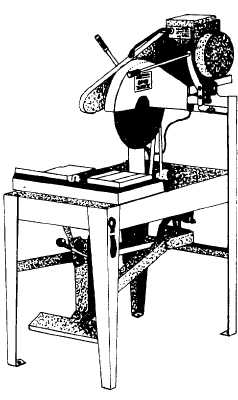BLOCK SIZES AND SHAPES
Concrete masonry units are available in many sizes and shapes to tit different construction needs. Both full- and half-length sizes are shown in figure 8-4. Because concrete block sizes usually refer to nominal dimensions, a unit actually measuring 7 5/8-by-7 5/8-by-15 5/8-inches is called an 8-by-8-by-16-inch block. When laid with 3/8-inch mortar joints, the unit should occupy a space exactly 8-by-8-by-16 inches.
ASTM (American Society for Testing and Materials) specifications define a solid concrete block as having a core area not more than 25 percent of the gross cross-sectional area. Most concrete bricks are solid and sometimes have a recessed surface like the frogged brick shown in figure 8-4. In contrast, a hollow concrete block has a core area greater than 25 percent of its gross cross-sectional area-generally 40 percent to 50 percent.
Blocks are considered heavyweight or lightweight, depending on the aggregate used in their production. A hollow load-bearing concrete block 8-by-8-by-16-inches nominal size weighs from 40 to 50 pounds when made with heavyweight aggregate, such as sand, gravel, crushed stone, or air-cooled slag. The same size block weighs only 25 to 35 pounds when made with coal cinders, expanded shale, clay, slag, volcanic cinders, or pumice. The choice of blocks depends on both the availability and requirements of the intended structure.
Blocks may be cut with a chisel. However, it is more convenient and accurate to use a power-driven masonry saw (figure 8-5). Be sure to follow the manufacturer's manual for operation and maintenance, As with all electrically powered equipment, follow all safety guidelines.
BLOCK MORTAR JOINTS
The sides and the recessed ends of a concrete block are called the shell. The material that forms the partitions between the cores is called the web. Each of the long sides of a block is called a face shell. Each of the recessed ends is called an end shell. The vertical ends of the face shells, on either side of the end shells, are called the edges.
Bed joints on first courses and bed joints in column construction are mortared by spreading a 1-inch layer of mortar. This procedure is referred to as "full mortar bedding." For most other bed joints, only the upper edges of the face shells need to be mortared. This is referred to as "face shell mortar bedding."
Head joints may be mortared by buttering both edges of the block being laid or by buttering one edge on the block being laid and the opposite edge on the block already in place.
MASONRY MORTAR
Properly mixed and applied mortar is necessary for good workmanship and good masonry service because it must bond the masonry units into a strong, well-knit structure. The mortar that bonds concrete block, brick, or clay tile will be the weakest part of the masonry unless you mix and apply it properly. When masonry leaks, it is usually through the joints. Both the strength of masonry and its resistance to rain penetration depend largely on the strength of the bond between the masonry unit and the mortar. Various factors affect bond strength, including the type and quantity of the mortar, its plasticity and workability, its water retentivity, the surface texture of the mortar bed, and the quality of workmanship in laying the units. You can correct irregular brick dimensions and shape with a good mortar joint.
Workability of Mortar
Mortar must be plastic enough to work with a trowel. You obtain good plasticity and workability by

Figure 8-5.-Masonry saw.
Continue Reading